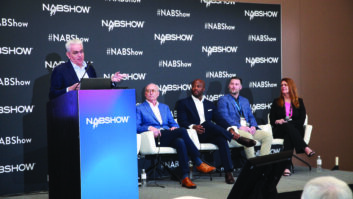The author is chairman of Digital Radio Mondiale.
Is there a more over-used word than “strategy” nowadays? Its definition is a plan of action designed to achieve a long-term or overall goal. Digital strategy is often understood as a broadcaster’s plan to improve their website and social media presence, so that they can be more relevant, “cool,” attractive to “yoof” and, generally, keep the station competitive in the market.

The digital strategy often acquires a prime position in specialized articles as well as at conferences and debates, when there is a more general debate about what regulators, governments or countries want to do about radio in the digital age. In this case, a few simple questions are often openly or not so openly raised: Should we go digital? Is radio still resilient? Is it necessary? Which digital technical standard should we use if we really want to change to digital? Shall we switch off analog? Will the commercial stations come along? Will we have enough budget for it or wait a bit as something better might come along?
The answers to these questions might help deliver a strategy or the beginning of a plan. Radio is here to stay. According to Nielsen (Q1 2018), radio in the United States, for example, has the largest weekly reach (92 percent of all U.S. adults) across television, radio and digital platforms. Therefore, the questions linked to the resilience or robustness of the medium, are easy to answer. More than three in five adults in the United Kingdom listen to radio via a digital platform of which according to the latest RAJAR figures.
If radio is here to stay, the long-term and overall strategy is therefore to include radio in the digital future of a nation. Not going digital, waiting for the one, not yet invented, super solution that will deliver everything digitally, including radio, is fanciful and delaying progress.
If the digitization of radio is a given “the digital strategy for radio” is an answer to the often-heard question: Which of the technical standards shall we adopt? Whether we like it or not, there are at least three major digital audio broadcasting standards (DRM, DAB/DAB+ and HD) recommended by ITU. They were invented at different times (DAB/DAB+ and HD are well into their 40s and DRM being the spring chicken), sometimes by the same engineers, to satisfy different requirements and using different approaches.
Important as the technology might be, discussing pros and cons of different technologies and comparing territories or cities, which have implemented one or the other technology is not a strategy but just marketing.
If the future of radio is digital, broadcasters and regulators must agree on a plan, which has the goal of making digital radio available to an entire country or countries, without gaps, for the benefit of all citizens and not only of some and switch off analog. This can ensure accessibility, competition, effective use of spectrum, content choice and good audibility at reasonable bitrates with extra services to all listeners and citizens.
The starting point for such a strategy cannot simply be a choice between DRM and DAB+ or DRM and HD, for example. It must start with the needs of the whole country, not only of the capital city. A strategy is shaped by the tradition of radio listening (India and the African continent are still “hooked on radio,” while in China the internet and TV are much more important than radio).
The history, geography, economy, culture of a country or even the city-rural split, the public-commercial broadcasting balance, the number of mobiles or cars, are all essential criteria. In India the middle classes are just discovering in significant numbers the pleasure of car ownership, so new cars with DRM-fit receivers have almost doubled to 1 million in the last six months. In the European countries, where the number of cars on the road is high, this is a challenge for the after-market adaptation of receivers to digital.
And there are other considerations, like the culture of change, the level of technical expertise, the state of the local electronics industry, as receivers, ideally produced locally to respond to the demands and taste of the population, are crucial for the success of digital radio. Importing radios is often not the answer to a very successful digital implementation.
Once all these key questions have factual answers, the solution will be obvious, and the strategy will have a shape. One of the findings might be that to achieve radio digitization more than one technical standard is necessary. DRM and DAB/DAB+ have been devised to be complementary in certain instances and, while a big city might benefit from the economy of scale of a multiplex, giving a digital future to a commercial or community station, DRM is suitable without any small-scale adjustment.
In many instances, DRM is the only way to cover a country completely, smoothly by using the digital AM bands and this might happen relatively fast. The needs of regulators, broadcasters and listeners are so diverse that the technical solutions must be, too. Trying to make one technology fit into one size is no strategy and ultimately undermines digital radio and its rollout.
The future of radio may well be digital, but it won’t survive on one single solution. It will not exist without a clear direction, a switch-off date and true engagement of all the stakeholders, especially the industry, which needs to respond locally with receiver solutions.
Last but not least, it will not survive without innovation. The U.K.’s most popular digital-only station is BBC6 Music with a 2.5 million listeners weekly. A few years back some strategists, a bit impatient with the pace of digitization, were thinking of closing this station down. So, be aware of the power of strategies and beware strategists.







